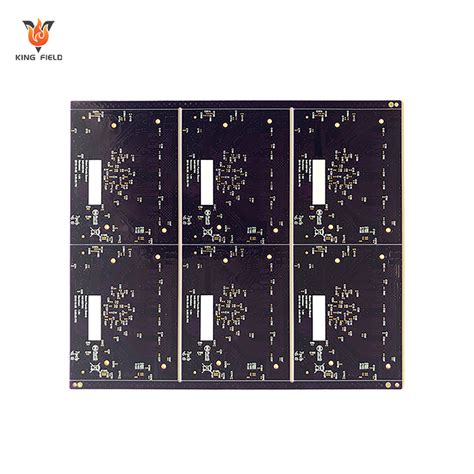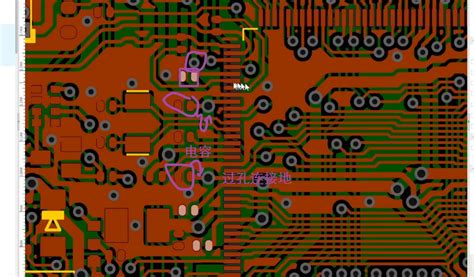High Frequency PCB Materials: Properties, Selection, and Applications
Introduction to High Frequency PCB Materials
Printed Circuit Boards (PCBs) operating at high frequencies require specialized materials that can maintain signal integrity, minimize losses, and provide stable electrical performance. As wireless communications, radar systems, and high-speed digital applications continue to push into higher frequency ranges (from hundreds of MHz up to millimeter-wave frequencies beyond 100 GHz), the choice of PCB substrate material becomes increasingly critical.
High frequency PCB materials differ significantly from standard FR-4 laminates in their dielectric properties, loss characteristics, and consistency. These specialized materials enable the design and manufacture of circuits that can handle high-frequency signals with minimal distortion, attenuation, or interference.
Key Properties of High Frequency PCB Materials
Dielectric Constant (Dk or εr)
The dielectric constant is one of the most important parameters for high frequency materials. It represents the material’s ability to store electrical energy and affects the propagation speed of electromagnetic waves through the substrate.
- Stability: A stable Dk across frequency and temperature variations is crucial for consistent performance
- Value range: High frequency materials typically have Dk values between 2.1 and 10, with lower values (2.1-3.5) preferred for most high-frequency applications
- Anisotropy: Some materials exhibit different Dk values in different directions (x, y, z axes)
Dissipation Factor (Df or tan δ)
The dissipation factor measures the dielectric losses in the material and directly impacts signal attenuation:
- Typical values: Range from 0.0001 (very low loss) to 0.01 (moderate loss) at high frequencies
- Frequency dependence: Most materials show increasing Df with frequency
- Impact: Lower Df values result in less signal loss and better quality factor (Q) for resonant circuits
Coefficient of Thermal Expansion (CTE)
Thermal management is critical in high frequency applications:
- Dimensional stability: Materials should have CTE values close to copper to prevent delamination
- Z-axis CTE: Particularly important for plated through holes (PTHs)
- Temperature cycling performance: Affects long-term reliability
Thermal Conductivity
High frequency circuits often generate significant heat:
- Standard materials: Typically 0.2-0.5 W/mK
- Enhanced materials: Some ceramic-filled substrates reach 1-4 W/mK
- Impact: Higher thermal conductivity helps dissipate heat and maintain stable electrical properties
Moisture Absorption
Water absorption affects dielectric properties and can cause dimensional changes:
- Typical values: Range from <0.01% for PTFE-based materials to >0.5% for some hydrocarbon ceramics
- Consequences: Moisture can increase Dk and Df, affecting circuit performance
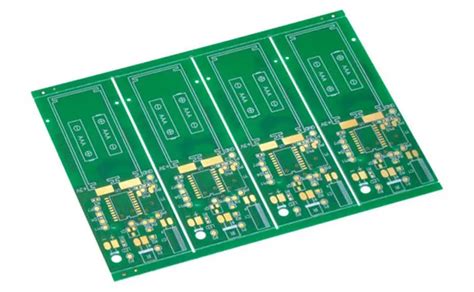
Common Types of High Frequency PCB Materials
PTFE-Based Materials
Polytetrafluoroethylene (PTFE) is the foundation for many high-performance RF/microwave materials:
- Advantages:
- Extremely low Df (0.0001-0.002)
- Excellent high-frequency performance
- Good chemical resistance
- Variations:
- Pure PTFE (e.g., Rogers RT/duroid 5880)
- Glass-reinforced PTFE (e.g., RT/duroid 5870)
- Ceramic-filled PTFE (e.g., RT/duroid 6002)
- Challenges:
- Difficult processing (special drilling and plating required)
- High CTE
- Higher cost
Hydrocarbon-Based Ceramic Materials
These materials combine hydrocarbon resins with ceramic fillers:
- Advantages:
- Easier processing than PTFE
- Good thermal conductivity
- Lower cost than PTFE
- Examples:
- Rogers RO4000 series
- Taconic RF-35
- Isola IS680
- Characteristics:
- Dk: 3.0-6.0
- Df: 0.002-0.005
Thermoset Polymeric Materials
These materials offer a balance between performance and processability:
- Advantages:
- Compatible with standard PCB processes
- Good mechanical properties
- Moderate cost
- Examples:
- Rogers RO3000 series
- Arlon 25N
- Characteristics:
- Dk: 3.0-10
- Df: 0.002-0.005
Ceramic-Based Materials
For extreme high-frequency or high-power applications:
- Types:
- Alumina (Al₂O₃)
- Aluminum Nitride (AlN)
- Beryllium Oxide (BeO)
- Advantages:
- Excellent thermal conductivity
- Very stable dielectric properties
- High mechanical strength
- Challenges:
- Brittle nature
- Difficult to process
- High cost (especially BeO)
Liquid Crystal Polymer (LCP)
Emerging material for extremely high-frequency applications:
- Advantages:
- Ultra-low moisture absorption
- Consistent Dk up to 110 GHz
- Flexible versions available
- Applications:
- Millimeter-wave circuits
- Flexible high-frequency electronics
Material Selection Considerations
Choosing the right high frequency PCB material involves multiple factors:
Frequency of Operation
- < 1 GHz: Many materials suitable (cost may drive selection)
- 1-10 GHz: Need for low-loss materials becomes important
- 10-30 GHz: Very low loss materials required
- > 30 GHz: Ultra-low loss materials with extremely stable Dk
Application Requirements
- Power handling: Affects thermal requirements
- Signal integrity needs: Impacts loss tolerance
- Environmental conditions: Temperature range, humidity, etc.
- Reliability expectations: Military vs. consumer applications
Manufacturing Considerations
- Process compatibility: Some materials require special handling
- Layer count: Multilayer boards may need compatible materials
- Via reliability: Affected by CTE mismatch
- Cost constraints: Balance performance with budget
Electrical Performance Needs
- Impedance control: Affected by Dk tolerance
- Loss budget: Determines maximum acceptable Df
- Phase stability: Important for phased array systems
- Skin effect: Surface roughness becomes important at high frequencies
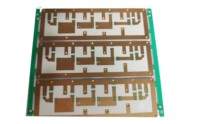
Advanced Topics in High Frequency PCB Materials
Anisotropic Dielectric Properties
Some materials exhibit direction-dependent dielectric properties:
- In-plane vs. out-of-plane Dk: Can differ by 10-20%
- Implications: Affects propagation of different wave modes
- Modeling challenges: Requires 3D electromagnetic simulation
Surface Roughness Effects
At high frequencies, current flows primarily at conductor surfaces:
- Impact:
- Increases conductor losses
- Affects effective Dk near conductors
- Measurement:
- Typically characterized by Ra or Rq parameters
- Mitigation:
- Use of low-profile copper
- Smooth foil treatments
Frequency-Dependent Material Properties
Most materials show variation in Dk and Df with frequency:
- Measurement techniques:
- Split-post dielectric resonators
- Microstrip ring resonators
- Terahertz time-domain spectroscopy
- Modeling approaches:
- Debye relaxation models
- Cole-Cole plots
- Multi-pole fitting
Multilaterial Stackups
Modern designs often combine different materials:
- Benefits:
- Optimize performance vs. cost
- Different layers for different functions
- Challenges:
- CTE mismatch
- Bonding interface reliability
- Manufacturing complexity
Testing and Characterization Methods
Dielectric Property Measurement
- Resonator methods:
- Split-post dielectric resonator (SPDR)
- Cavity resonator
- Microstrip ring resonator
- Transmission line methods:
- Time-domain reflectometry (TDR)
- Vector network analyzer (VNA) measurements
- Specialized techniques:
- Free-space quasi-optical methods
- Terahertz spectroscopy
Thermal Characterization
- Thermal conductivity:
- Laser flash analysis
- Heat flow meter
- CTE measurement:
- Thermomechanical analysis (TMA)
- Dilatometry
Mechanical Testing
- Peel strength: Measures copper adhesion
- Flexural strength: Important for rigid-flex applications
- Moisture absorption: Weight gain measurements under controlled conditions
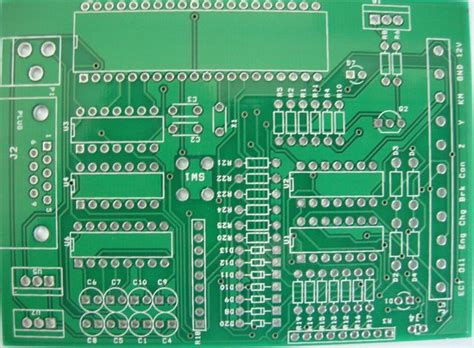
Applications of High Frequency PCB Materials
Telecommunications Infrastructure
- 5G base stations: Requires materials stable up to mmWave frequencies
- Massive MIMO antennas: Demands consistent Dk across large arrays
- Backhaul equipment: High-speed data links need low-loss materials
Aerospace and Defense Systems
- Radar systems: Especially AESA (Active Electronically Scanned Array)
- Electronic warfare: Wideband performance critical
- Satellite communications: Needs materials stable across temperature extremes
Automotive Electronics
- ADAS sensors: 77 GHz radar systems
- V2X communication: 5.9 GHz DSRC
- In-vehicle networks: High-speed data buses
Test and Measurement Equipment
- Network analyzers: Reference circuits need ultra-stable materials
- Signal generators: Low-phase-noise requirements
- Oscilloscope probes: High-fidelity signal capture
Medical Devices
- MRI systems: High-field systems require specialized materials
- Therapeutic RF devices: Precision energy delivery
- Implantable electronics: Biocompatible high-frequency materials
Future Trends in High Frequency PCB Materials
Higher Frequency Requirements
- THz applications: Emerging above 100 GHz
- 6G development: Pushing beyond 100 GHz carrier frequencies
- Broadband systems: Ultra-wideband operation
Integration Challenges
- Embedded components: Materials compatible with integrated passives
- Heterogeneous integration: Combining RF, digital, and power electronics
- 3D packaging: Materials for vertical interconnects
Advanced Material Development
- Nanocomposites: Engineered fillers for tailored properties
- Metamaterials: Artificially structured substrates
- 2D materials: Graphene and other novel substrates
Sustainability Considerations
- Lead-free processing: Compatible with RoHS requirements
- Recyclability: End-of-life considerations
- Halogen-free materials: Environmental and health concerns
Conclusion
The selection of appropriate high frequency PCB materials is a critical aspect of modern electronic design, particularly as applications continue to push into higher frequency ranges. Understanding the fundamental properties, trade-offs, and application requirements enables designers to make informed material choices that balance electrical performance, manufacturability, reliability, and cost.
As technology advances, we can expect continued innovation in high frequency PCB materials, with new formulations addressing the challenges of higher frequencies, greater integration, and more demanding operating environments. The development of these advanced materials will play a crucial role in enabling next-generation wireless communications, sensing systems, and high-speed digital electronics.
For engineers working in high-frequency circuit design, staying informed about the latest material options and their characteristics is essential for creating successful, high-performance products in an increasingly connected and high-speed world.


